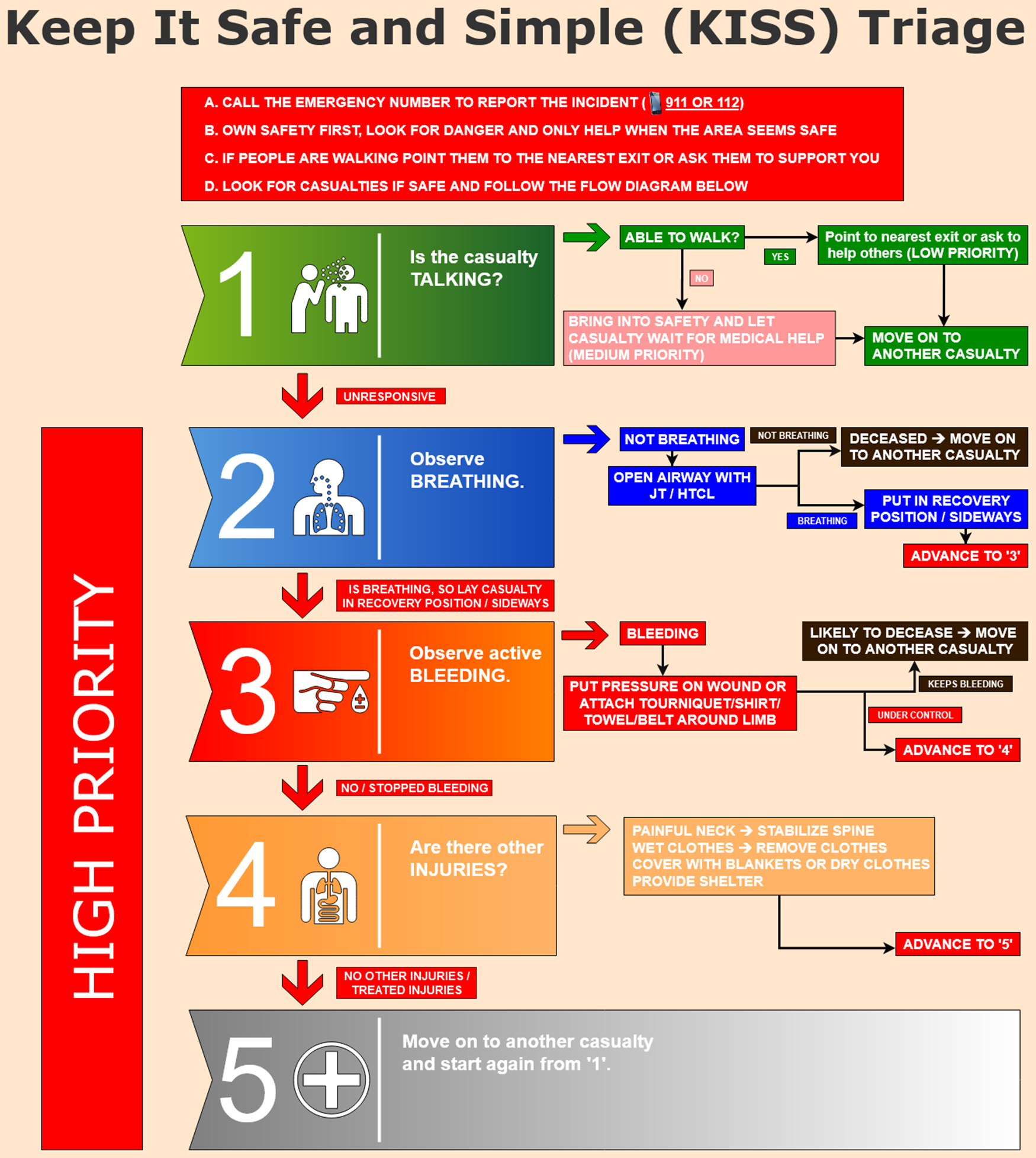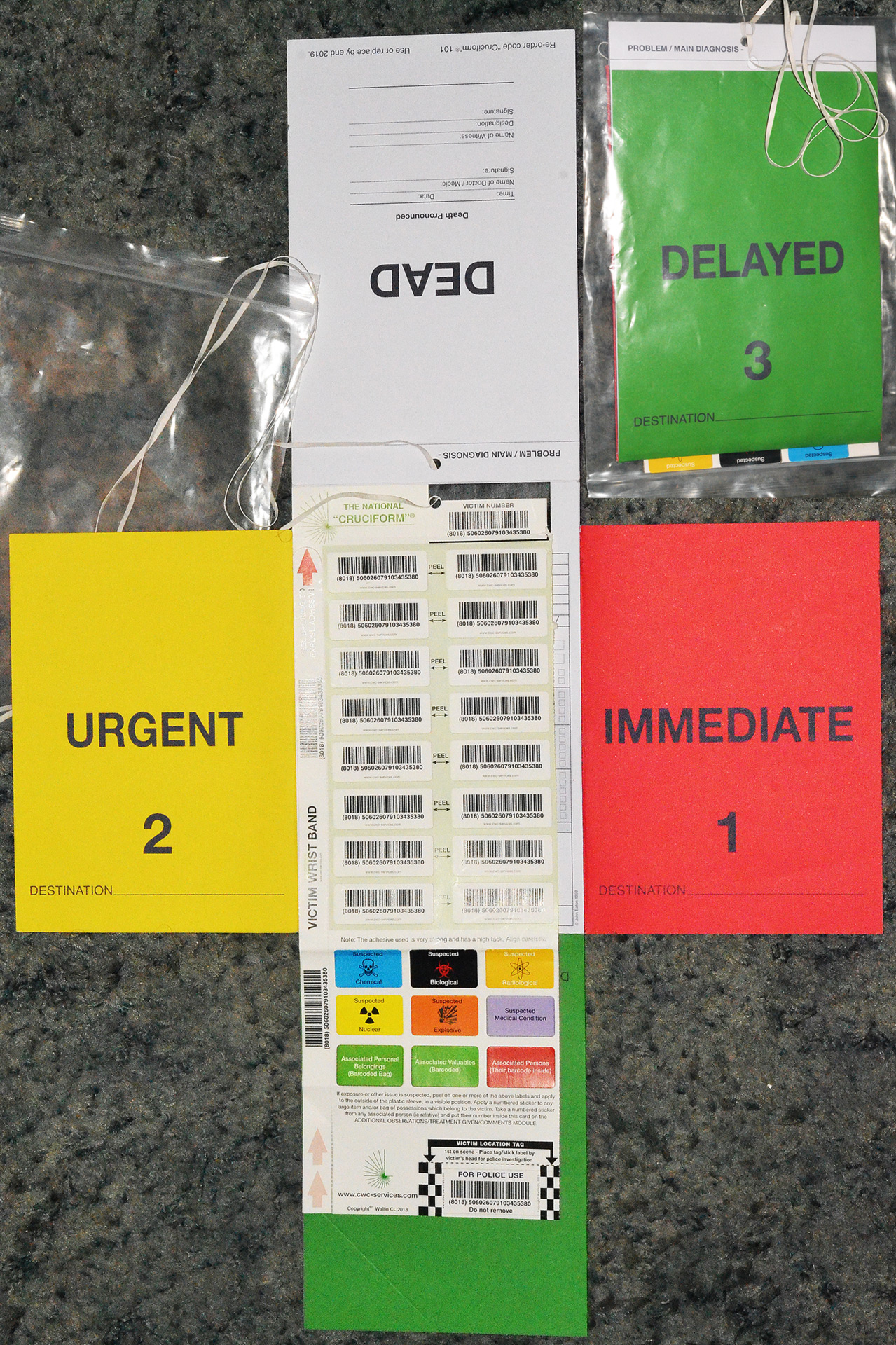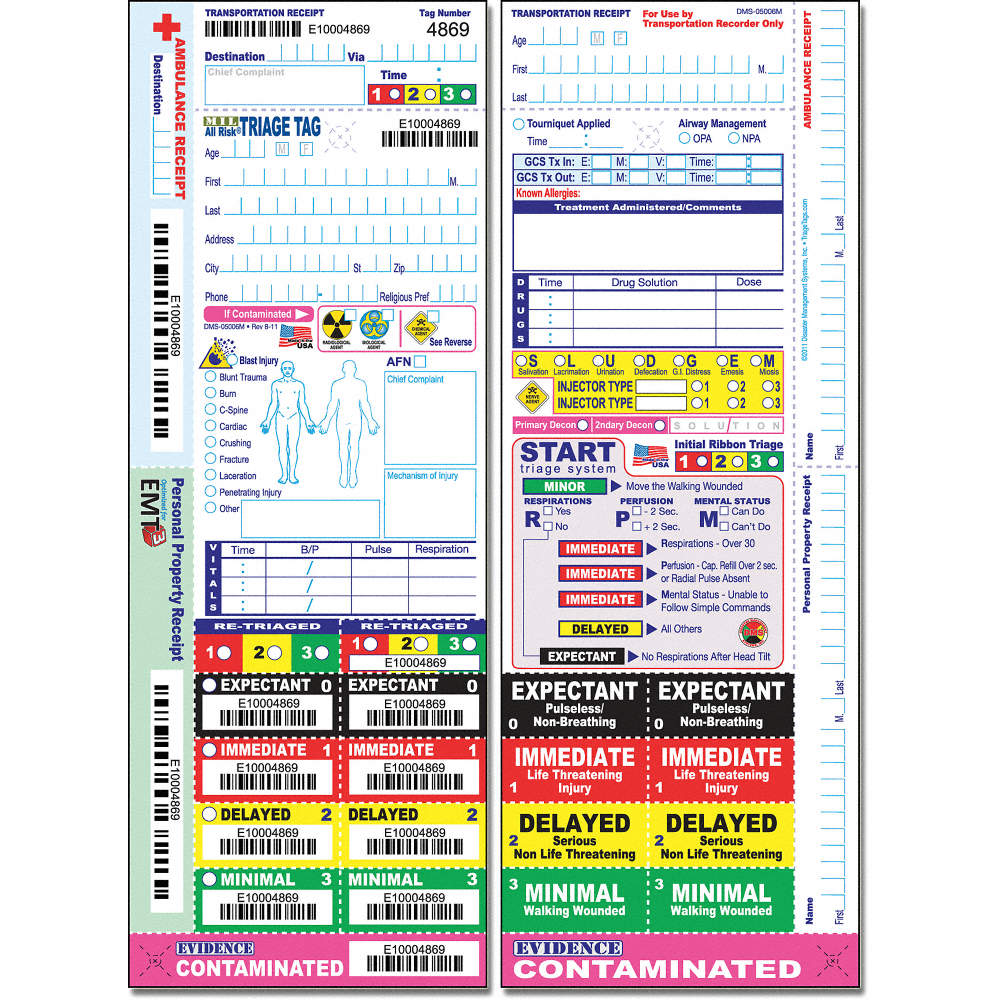Military Triage Categories - Introduction The Modified Physiological Triage (MPTT) is a newly developed main triage device that, compared to existing devices, shows the highest sensitivity in predicting the need for life intervention (LSI) in both the military and civilians. To improve its performance, we proposed increasing the upper respiratory rate (RR) to 24 breaths per minute (bpm) to produce MPTT-24. Our objective is to analyze the feasibility of the proposed MPTT-24 by comparing its performance with the existing British military Sieve.
The Joint Theater Trauma Registry (JTTR) and Trauma Audit Research Network (TARN) review methods were applied to all adult patients (>18 years) presenting between 2006-2013 (JTTR) and 2014 (TARN). Patients were identified as priority (P1) if they received one or more LSIs. The use of hospital RR, originally recorded in isolation, variation, and accuracy of ≥24 bpm, was compared with existing levels (≥22 bpm) in the estimation of P1 status. Patients were then classified as P1 or non-P1 by MPTT, MPTT-24, and UK Military Sieve.
Military Triage Categories
The results of the MPTT and MPTT-24 performed better than the existing British test method, with a statistically significant increase (p < 0.001) in the change between 25.5% and 29.5%. In both populations, the MPTT-24 showed a significant decrease in sensitivity and increased accuracy compared to the MPTT. A statistically significant difference was observed between MPTT and MPTT-24 in how they classified TARN and JTTR cases as P1 (p < 0.001).
Explosive Hazard Identification In Pharmaceutical Process Development: A Novel Screening Method And Workflow For Shipping Potentially Explosive Materials
Conclusion Compared to the existing MPTT, the MPTT-24 allows for faster evaluation. Both continue to operate beyond the existing methods of the main event, and in the military that determines a slight increase in undertriage is compensated by a reduction. We recommend that the MPTT-24 be considered as a replacement for the existing British Military Sieve.
This article or section requires a source or citation that appears in a credible, third-party publication. . See: http://creativecommons.org/licenses/by/4.0/
If you would like to use any or all of these articles, please use the link below, which will take you to the Copyright Center's RightsLink service. You will be able to get instant pricing and instant access to reuse the content in many ways.
Triage is a process that prioritizes patients based on their clinical relevance and is a key principle of effective incident management. . The initial test is a rapid assessment of the patient that occurs at the scene and is often performed in difficult situations. For it to be effective, it must be fast, reliable and reproducible regardless of the service provider using it.
Disaster Management Systems Military Triage Tags,pk50
The British Military Sieve and the National Ambulance Resistance Unit Sieve are methods used by the Defense Medical Service and the Ambulance Service, respectively, for critical incident triage. Very urgent. Secondary testing occurs in a more permissive environment, such as at a mobile station. Bloom at or at the entrance to the hospital. Unlike the initial test, it is a thorough assessment of the patient, usually performed by an experienced and senior physician. If necessary, it allows to improve the type of triage divided during the main triage process before treatment or hospitalization.1.
Several studies have shown that existing methods of triage have limited accuracy in predicting the need for life-saving interventions in both military and civilian environments. Sensitivity for predicting the need for life intervention with the lowest rate of the lowest and most acceptable level of overcrowding in the military and civilians.5-7.
Respiratory rate (RR) and Glasgow Coma Scale (GCS) constitute the main components of MPTT, and both can be measured accurately with reliability between important rates as described previously.8 We propose to modify the MPTT by adding the upper airway. A respiratory rate of up to 24 breaths per minute (MPTT-24) allows providers to more easily perform RR counts for 15 seconds and multiply by four (or 10 seconds and multiply by six), thus reducing the time required. MPTT. In addition, we adopted a notification in response to verbal stimuli; respond to painful stimuli; Non-response scale (AVPU) for the purpose of assessing the level of consciousness by replacing the existing GCS assessment <14.9 10.

The adoption of a more practical approach - with RR levels that are easily calculated over a shorter period of time - can change the characteristics of the MPTT test. The purpose of this study is to analyze the feasibility of the proposed MPTT-24 and to compare its test characteristics with both the original MPTT and the British military sieve.
Collaborating With The Canadian Armed Forces To Help Save Lives
A review of the Joint Theater Trauma Registry (JTTR) and Trauma Audit Research Network (TARN) was performed for all adult patients (>18 years of age) present between 2006-2013 (JTTR) and 2014 (TARN).
The JTTR received data on all seriously injured patients treated by the UK Defense Medical Service in a follow-up setting since 2003. Initial inclusion criteria were patients who had activated trauma units, but it was expanded in 2007 to include all injured patients referred to the Royal Center for Defense Medicine for treatment. Founded in 1988, TARN is the largest trauma database in Europe. , collects data from all trauma hospitals in England and Wales about trauma patients. Moderate to severe, information from point of injury to discharge. Criteria for TARN inclusion included hospitalization > 3 days, intensive care or in-hospital death.12 13 Patients were pronounced dead at the scene and were not transported to the hospital. Not included in the database. Patients are assumed to be non-ambulatory due to the nature of the TARN database and its inclusion criteria.6.
Patients were identified as priority (P1) if they received one or more life interventions from a predefined list through consensus among experts involved in the management of major events (Figure 1. 1). 14 hospitals used the first recorded RR in isolation. The sensitivity and accuracy of 24 breaths per minute were compared with the available volume (≥22 breaths per minute) at the estimation of the P1 state. Patients were then classified as P1 or non-P1 by MPTT, MPTT-24 (Figure 2) and UK Military Sieve. The McNemar test was used to determine statistical significance between triage devices.
Modified Physiological Test Equipment (MPTT)-24 Algorithm with increased upper respiratory rate (≥24) Assessing level of awareness using reminders. respond to oral stimuli; respond to painful stimuli; Non-response (AVPU scale) and additional assessment for external bleeding. Vassallo 2017. CC BY 4.0.
On The Principles Of War: Reorganizing Thought And Practice For Large Scale Combat Operations
The use of JTTR is approved by the Royal Medical Center for Immunization. Additionally, as part of a larger work project, the study was approved by the Human Research Ethics Committee of the University of Cape Town, the author's primary institution (Ref. 285/2013).
Baseline study characteristics are shown in Table 1. In both populations, an increase in RR in isolation was associated with an absolute decrease in sensitivity (TARN 11.4%, JTTR 13.5%) and an increase in accuracy (TARN 8.9%, JTTR 13.8). %) increases in OR and is positive. Predictive values were observed when using a higher RR for both TARN and JTTR (Table 2).
Performance analysis of test characteristics for RR (≥22 and 24 levels), MPTT, MPTT-24 and existing British military sieve

When combined with MPTT-24, an absolute decrease in sensitivity was observed (TARN 8.9%, JTTR 3.2%) with an increase in specificity. There was a statistically significant difference between MPTT and MPTT-24 in how they classified TARN and JTTR cases as P1 (p < 0.001).
Military Friendly Employer Archives
The MPTT-24 showed a statistically significant (p < 0.001) increase in sensitivity (TARN 25.5%, JTTR 23.5%) over the existing British military sieve in the ability to identify those in need of life-saving intervention.
In this study, we show that a modified version of the MPTT in the form of the MPTT-24 can be implemented while maintaining similar performance in predicting the need for intervention in the lives of registered populations, both civilian and military casualties. With these modifications, the MPTT-24 continues to operate beyond the existing British military sieve.
In compliance with the existing British Military Sieve 2, we have included an assessment of severe external bleeding damage in the MPTT-24. While the experience of such trauma tends to be limited to everyday civilian trauma care, we note recent major terrorist events in Europe (Paris 2015 and London 2007) where the demand for games is high. In the context of continuous Marauding terrorist attacks. , the ability to provide medical care will be limited; Management of external bleeding by technical dressings or blood transfusions can save lives until an accident. The cause is allowed.
The MPTT assessed the patient's level of awareness using the GCS, patients with a score of 13 or below were considered P1. While it represents the best level of awareness at
Pdf] Development Of A Mass Casualty Triage Performance Assessment Tool
Toteme trenchcoat, trenchcoat womens, trenchcoat, rain trenchcoat, mens trenchcoat, black trenchcoat, trenchcoat men, hooded trenchcoat, oversize trenchcoat, leather trenchcoat, burberry trenchcoat, long trenchcoat

0 Comments